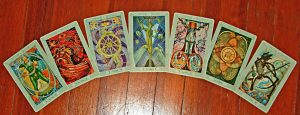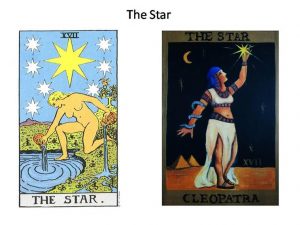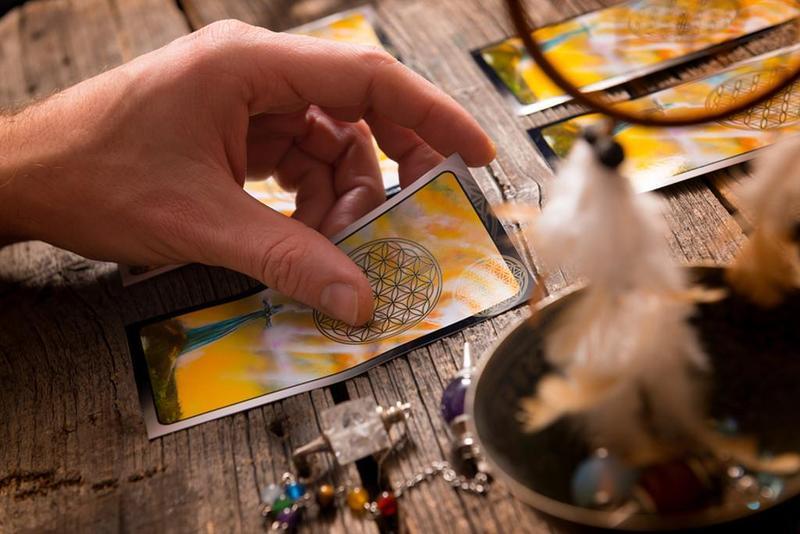The Shakespeare Oracle: Using tarot to teach the bard’s works
The Shakespeare Oracle: Using tarot to teach the bard’s works
Payal Padmanabhan has a unique methodology of teaching Shakespearean plays in classrooms by means of tarot cards. She uses a themed deck called “The Shakespeare Oracle” to approach and analyze the texts of Shakespeare.
Modern society’s obsession with Shakespeare is a well-established fact. While school curriculum has elevated the bard to the stature of ultimate proof of mastery in English literature, cinema, music and other forms of visual culture have appropriated him, each in their own way, as a marketable means of expression.
Jean Marsden, Professor of English at University of Connecticut, has rightly observed in her book that “Each new generation attempts to redefine Shakespeare’s genius in contemporary terms, projecting its desires and anxieties onto his work.”
While there is no doubt that modern society capitalises on Shakespeare in varied forms, it is also true that the appropriation of Shakespeare in popular and visual culture, makes him accessible to the masses.
Payal Padmanabhan currently teaches English Literature at Delhi University. She has a unique methodology of teaching Shakespearean plays in classrooms by means of tarot cards. Usually associated with occult practices and divination, tarot cards have, in the last few decades or more, gained popularity as a means of future foretelling.
The history of tarot cards goes back to fifteenth century Europe when they were used by aristocratic families as a means of entertainment. Inspired by playing cards, the ornate imagery of the cards chronicled the histories of the families that used them and represented aspects of human life. Over time, different artists began to reconfigure the traditional imagery of the tarot. By the late twentieth century we find that a large number of different themes associated with philosophy, poetry or society started appearing in form of images on the cards.
Padmanabhan uses one such themed deck called “The Shakespeare Oracle”, (Created by A.Bronwyn Llewellyn and illustrated by Cynthia von Buhler), to approach and analyse the texts of Shakespeare. The deck consists of 78 cards with images, each using a particular character from Shakespeare’s plays or a Shakespearean quote to express the symbolism attached to the card. The deck also suggests the use of Shakespeare-inspired card arrangements/spreads which can be used to foretell an individual’s future.
“I thought of doing something different to teach Shakespeare in my classes. When I suggested using tarot decks for analyzing texts, students got very excited and were a lot more involved in class,” says Padmanabhan.

She gave examples of two cards from The Shakespeare Oracle which she used in her classes. First,is “The Hanged Man”. Traditionally, the card depicts a man suspended upside down and the image is interpreted as being stuck in a dilemma. In The Shakespeare Oracle the same card, makes use of the image of Hamlet. The hero of the play, on whose name it is titled, is famous for his quote, “to be or not to be”. “It has been argued that Hamlet is supposed to be one of those thinking heroes who died because he could not decide or act,” she says.
Another such card is “The Star” which traditionally shows a young girl drawing water from a pond. It is the signifier of hope. The Shakespeare Oracle makes use of an image of Cleopatra to re-envision “The Star”. In the Shakespearean tragedy, “Antony and Cleopatra”, the female protagonist is the depicted as the last hope of the Egyptian civilisation. “In the card, Cleopatra is shown to be standing in front of Egypt, with a star in her hand, the image clearly showcasing her skills as a leader,” says Padmanabhan.

The use of the cards for fortune telling is a matter of speculation and personal beliefs. However, the value of the Shakespeare deck lies in its capacity to stimulate curiosity in students. “Tarot is a lot about storytelling which is probably why it has the capability to make an appropriate use of Shakespearean plays. There is no human emotion or aspect of life that Shakespeare had not dwelled upon in his narratives,” she adds.
“The Shakespeare deck is another way of appropriating Shakespeare into popular culture. For instance, there are film adaptations of Shakespeare’s plays. The cards are another way of using visuals to tell the stories of Shakespeare. It was made by someone who was passionate about tarot and Shakespeare and decided to bring both together.”
Padmanabhan did her M.Phil in English Literature from Delhi University. Her research concentrated upon the politics of representation in fifteenth century Italian tarot cards. She is also an amateur tarot card reader.
“It is one thing when I do a tarot reading and quite another thing when I teach Shakespeare in class using tarot cards. Of course, there is an aspect of the supernatural phenomenon which excites students when I teach through tarot cards in class. But I try to problematise this aspect of supernatural when I teach in class. I emphasise that whether one believes in the tarot’s capacity to predict the future or not, one cannot ignore that the tarot is a text of cultural memory. Like a literary text, it too reflects the material, social and political contexts of its production,”she says.
Padmanabhan goes on to explain that Shakespeare has also been transformed into a marketable commodity. Visual culture often uses art to discuss the period in which it was produced. “The Shakespeare Oracle uses exquisite illustrations to discuss the period in which his plays were produced, but it cannot be denied that the deck uses the brand value of Shakespeare,” explains Padmanabhan.
“As a teacher I find the use of visuals to teach Shakespeare in class to be very effective. The illustrations are very powerful and help students to not just analyse the texts better, but also a lot of times they become a good introduction to the works of Shakespeare,” said Padmanabhan.
by The Indian Express/
Be the first to post a message!
